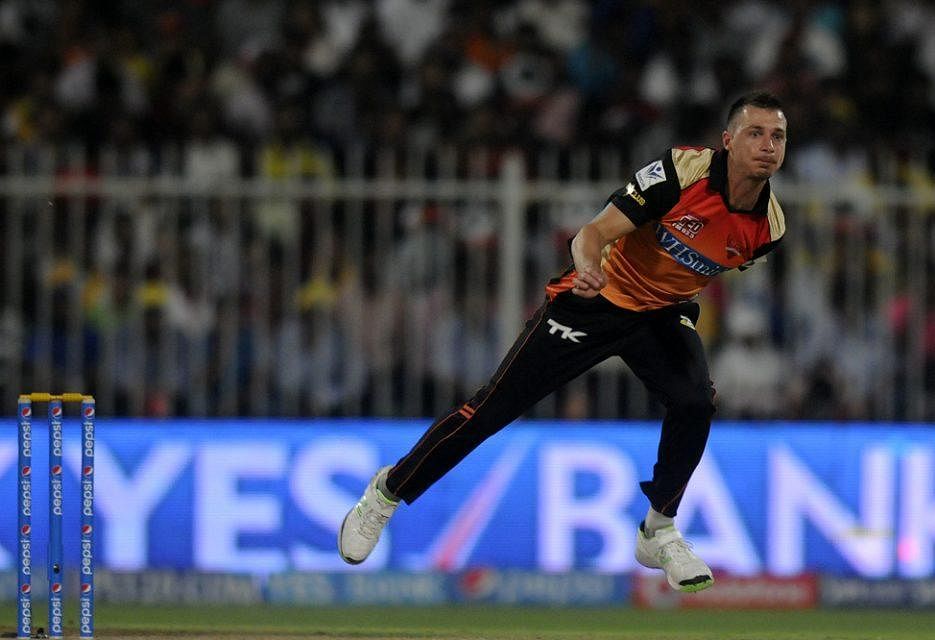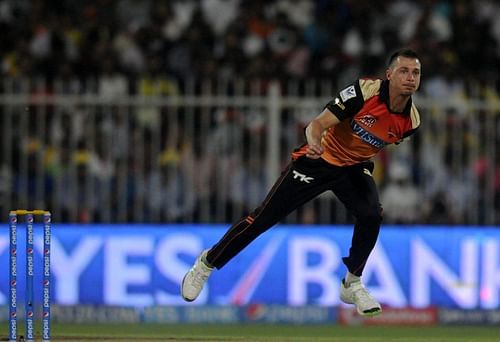
IPL 2014: A blot on Dale Steyn’s career

“Oh, those are great stats. Outstanding stats, actually. But numbers never tell you the full story, do they? It’s the sheer menace. How do you measure menace?”, Alan Wilkins said while commentating about Dale Steyn’s career.
This season, though, the story has been drastically different. In his worst IPL by a long margin, Dale Steyn has been a pale shadow of his former self. Both Shikhar Dhawan and Darren Sammy have preferred his new ball partner Bhuvneshwar Kumar over him in crunch situations, and being the captain’s second choice must be unfamiliar territory for arguably the world’s best fast bowler.
In his 14 matches in the seventh edition of the IPL, he took only 11 wickets at a disappointing average of 39.18 – fifteen more than his career IPL average of 23.32. On small grounds with lightning quick outfields, and pitches so flat that they look like they have been prepared by road contractors, his economy of 7.69 isn’t awful. Many lesser bowlers may even consider it as a fairly successful season, but Dale Steyn must be disappointed.
After all, in his IPL career of 83 matches, he’s been responsible for the downfall of 89 batsmen, and has picked his wickets at an outstanding average of 23.80. The deadly combination of lethal pace and pinpoint accuracy has ensured that Steyn has kept his economy rate down at 6.58, making him an indispensable weapon in his captain’s armoury.
While talking about the magical art of fast bowling, Ian Bishop said: “You want to look into a batsman’s eyes and see that he doesn’t want to be there”. And until recently, this was such a regular feature in Steyn’s game. While it may be true that an individual’s fortunes in the shortest format of the game largely depends on luck, Steyn had quite effortlessly made his own luck over the years.
Over the last two months though, he has blundered. He has made rookie mistakes, and hasn’t been anywhere close to the top of his game. This year, the menace has mysteriously disappeared. He seems to have left his venom in some obscure corner of the planet; his sting has now vanished.
To showcase how off-colour Steyn actually was this year, a cursory glance at his previous seasons should do the trick. His bowling average in the last three years has been nothing short of staggering – 20.21, 15.83, and 21.85 are numbers any bowler would be proud of. In the first six editions of the league, there had been only three occasions when Steyn was hit for over twenty in an over. This season alone, the carnage happened four times. Other than IPL 7, the only year when Steyn averaged less than one wicket per match was way back in 2009. He had played just 3 matches that season – which is too small a sample size to draw any reasonable conclusion.
This season, Steyn didn’t make the necessary adjustments required for T20s. A batsman can play technically-correct, Test match shots, hand-picked straight out of the coaching manual, and still score handsomely in T20s. A bowler cannot do that – the corridor of uncertainty often dilutes to an illusion, and bowling in the channel seems to work only against traditional batsmen in the first few overs of the innings. His line and length this season would have probably resulted in yet another five-for in a Test match, but screamed “hit-me” for a T20.
AB de Villiers, MS Dhoni and Yusuf Pathan mercilessly tore him apart when he bowled length deliveries outside off, and his performances in those games led to the Sunrisers crashing out of the tournament. The yorker is probably the most important ball in this format of the game, and Steyn struggled to land them at the right times. In this interview, he talks about how back to back games were affecting his bowling, and how he hadn’t had sufficient time to perfect his yorker.
Also, he didn’t seem to vary his pace enough. While many bowlers prospered using clever variations in pace, Steyn barely used the slower delivery. On small grounds, bowling every ball at 140 clicks can often backfire, and Steyn learnt that lesson the hard way.
Mitchell Starc and Bhuvneshwar Kumar were prime examples of how bowling with the straight seam and a decent seam presentation allows the ball to swing just the slightest bit more, thus making it much harder for the batsmen. Meanwhile, Steyn continued to inexplicably bowl a majority of his deliveries with a cross seam, even though it failed more often than not.
His franchise, the Sunrisers Hyderabad, have had to bear the brunt of Steyn’s underperformance. Following a season where they consistently defended scores as low as 130 with effortless ease, the complete lack of incision in their bowling department this year hit them hard.
It has been a tough two months for Dale Steyn. But the genius that he is, it’s highly probable that he’d be back to his terrifying best, sooner rather than later. At the end of his illustrious career, it’s unlikely that these two months will affect his legacy. These two months would probably fade away from public memory, and would not cast any shadows over his reputation as the best fast bowler in the world in the post Wasim-Waqar-McGrath generation.
Dale Steyn himself, though, may not sleep well. He had once said: “I enjoy taking wickets more than most people can understand.”
Taking into consideration the remarkably high standards he sets for himself, he may view this as a blip in his fabulous career, making it a stain that would forever remain; a wound that shall never fully heal.